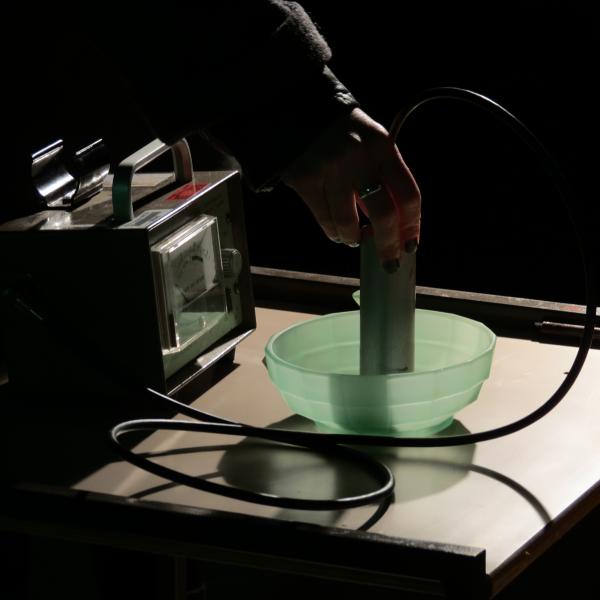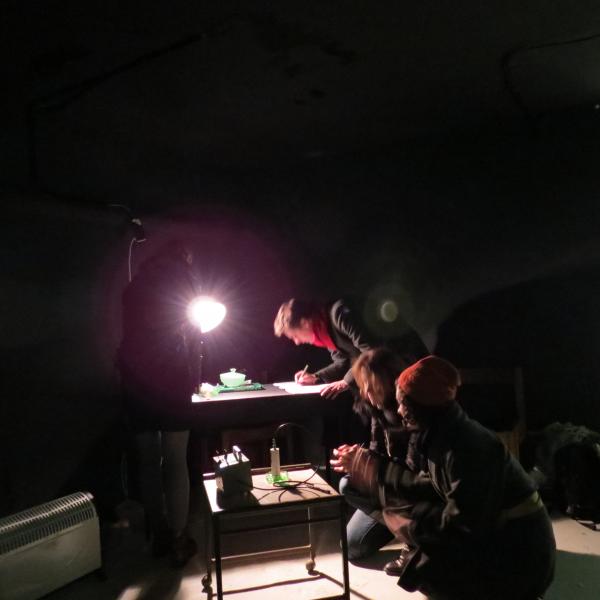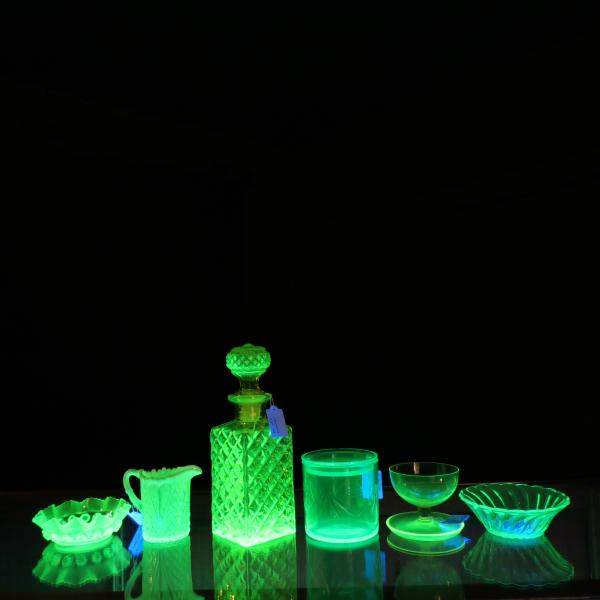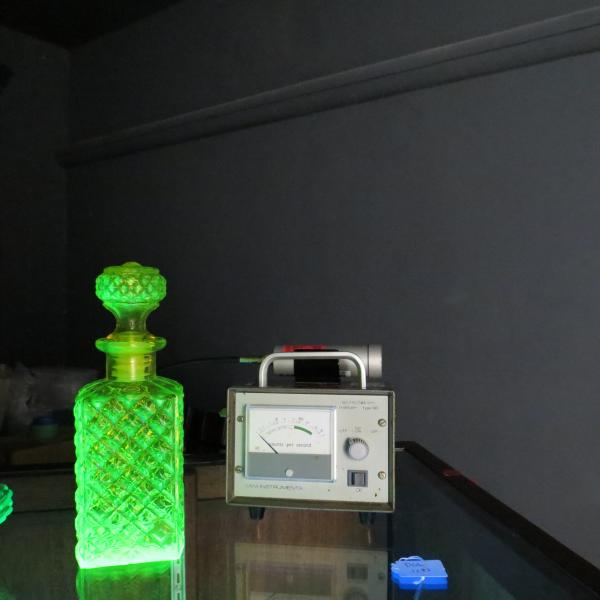



Or the Mystery of the Yellow Decanter
The project ‘Singularly Assured Destruction: A laboratory for measuring the variable risk perception of radioactivity’ was set up to measure radioactive emissions from a collection of Uranium glass. The aim of the project is to use the collection to build an index of measurements that can be compared with similar levels in the world which are perceived as high or low risk in different contexts (see the post on Singularly Assured Destruction for information about the artwork). This article gives an account of measuring the glass, its risk levels, and the emerging narratives linking the production of uranium glass and the nuclear weapons and nuclear power industry.
Everyone has different perceptions of risk, and for many people just the mention of the word ‘uranium’ rings alarm bells, and rightly so: Uranium is a naturally occurring radioactive isotope scientifically enriched to create nuclear warheads and fuel rods for nuclear reactors. At the same time most people have a item of uranium glass in their family and are completely unaware of its presence. This mass produced glass can be bought cheaply in charity shops and antique centers around the country. As a domestic object it inhabits our most intimate spaces: decorative glass on the mantle piece, dressing table sets and sweet dishes. These objects tell personal stories, but the material itself embodies a fascinating history of the domestic and military use of uranium. It may even provide insights into the circulation of depleted uranium in the 21st century.
Uranium glass is not regulated by the Health Protection Agency (HPA) because it does not emit enough Becquerel’s (Bq) . However the radioactivity of the individual pieces vary enormously depending on their age and colour, where they were made, and the thickness of the glass. So although it’s not a controlled product, the HPA advised me not to let people handle the glass without a Radiation Protection Assessment . I was also concerned about bringing together 70 pieces of glass for public display, and keen to ensure that there wasn’t an amassed dosage rate from the collection as whole. Although Uranium Glass does not present a significant risk general precautions include: not wearing it next to the skin, not using abrasives on it, and not handling it for long periods of time.
To build up a picture of Uranium glass, its radiological character and history I have drawn upon a mixture of information from government reports, collector’s anecdotes, DIY science websites and advice and measurements from a Nuclear Metrologist and Radiation Protection Adviser. I also refer to ‘The Big Book of Vaseline Glass’ by nuclear expert and collector of British uranium glass, Barrie Skelcher (2002). Skelcher worked for the UK Atomic Energy Authority in the 1950s, as a Health Physicist at Sizewell in the 1960s, and established the information center for the new Sizewell B in the 1980s when he started using uranium glass to demonstrate safe levels of radiation. Now retired, the Skelcher’s have amassed a collection of over 800 pieces. One of the ideas that motivated me to collect uranium glass was the recurring anecdote that uranium supplies were restricted due to the development of nuclear weapons in the 1940s (Skelcher, 2002, p15). Pringle & Spigelman (1983) give a detailed account of the development of nuclear weapons and nuclear power. They describe how, in the 1940s, the Manhattan project required vast amounts of natural uranium to develop small amounts of weapons grade enriched uranium. The Americans kept to free-market principles and didn’t nationalize their Uranium mines (p53-4), preferring to establish a secret cartel the ‘Western Suppliers Group’ (p203), to control the market and keep prices down (p203). As the nuclear power industry grew in the 1960s and 70s the USA held a monopoly on enriched uranium (p265, 332-2), but not its by-product of depleted uranium, which quickly became readily available.
So it seems likely that uranium glass made pre-nuclear weapons would contain natural uranium; and that after the invention of nuclear reactors it would be more likely to contain depleted uranium. This could be detected through a discrepancy in the types of radioactive content in the glass. Observing the 1st Glass selection of antique uranium glass shows that, in general, the older designs have a higher radioactive content . Skelcher also itemizes the uranium weight content in his collection which shows that colour as well as age is a factor in its uranium content.
THIS ARTICLE WILL SHORTLY BE EXPANDED TO INCLUDE THE TEST RESULTS AND CONCLUSIONS.